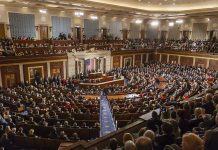
The Trump administration plans to cut 1,200 positions at the CIA as part of a larger effort to streamline intelligence operations and reduce government spending.
Top Takeaways
- CIA staffing will be reduced by 1,200 positions, with other intelligence agencies also facing cuts
- Reductions will occur gradually through reduced hiring and early retirement offers rather than mass layoffs
- CIA Director John Ratcliffe is aligning the agency with Trump’s national security priorities, focusing on human intelligence and China
- The administration has eliminated diversity programs at intelligence agencies while repositioning resources
- Officials describe the changes as part of a strategy to “infuse the agency with renewed energy” and create opportunities for rising leaders
Gradual Implementation of Intelligence Agency Workforce Reduction
The White House has informed Congress of plans to reduce staffing at the Central Intelligence Agency by approximately 1,200 positions, according to recent reports. This reduction represents a significant change to the estimated 22,000-person workforce at the agency. The cuts will unfold over several years primarily through reduced hiring rather than immediate layoffs, with several hundred employees already having opted for early retirement packages offered earlier this year. The CIA was the first U.S. intelligence agency to join the voluntary redundancy program initiated by the Trump administration.
Other intelligence agencies face similar workforce reductions. The National Security Agency has begun offering voluntary resignations to some employees, signaling a broader restructuring across the intelligence community. These changes come as part of President Trump’s larger effort to reduce the size of the federal government and redirect resources toward his administration’s national security priorities.
The Trump administration to cut more than 1,000 staff at CIA, intel agencies https://t.co/11SVm014Zp
— The Hill (@thehill) May 3, 2025
Leadership Changes and Strategic Shifts
CIA Director John Ratcliffe, who previously served as Director of National Intelligence during Trump’s first term, is leading the transformation of the agency. According to reports, Ratcliffe plans a comprehensive overhaul focusing on increasing intelligence gathered from human sources and emphasizing China as a primary concern. The administration has already demonstrated its willingness to make significant leadership changes by firing Tim Haugh, the general who led both the NSA and the Pentagon’s Cyber Command.
“These moves are part of a holistic strategy to infuse the agency with renewed energy, provide opportunities for rising leaders to emerge, and better position CIA to deliver on its mission,” said a CIA spokesman.
The CIA has already begun implementing the reductions, having fired some junior officers and offered buyouts earlier in the year. While these changes align with the administration’s broader government efficiency goals, they represent a significant shift in operations for an agency that has historically expanded its workforce in response to emerging global threats and technological challenges.
Questions of Political Influence and National Security Impact
During his confirmation hearings, Ratcliffe addressed concerns about potential political influence over intelligence operations. When questioned about maintaining the agency’s traditional apolitical stance, he referenced his previous tenure as Director of National Intelligence, stating that politicization “never took place” under his leadership. The administration’s elimination of diversity, equity, and inclusion programs at intelligence agencies has drawn scrutiny, with a judge temporarily blocking the firing of 19 employees involved in these programs.
While supporters view these changes as necessary to create a more efficient and focused intelligence apparatus, critics question whether reducing personnel during a time of complex global threats could impact America’s information gathering and analytical capabilities. The administration maintains that strategic restructuring will allow agencies to better adapt to evolving national security challenges while reducing unnecessary government spending. As these changes are implemented over the coming years, their impact on intelligence operations and national security will become clearer.

















